Touch for Health
Workshops
Learn how to improve your health and renew your energy naturally! Using 14 Muscles and their 14 related Acupuncture Meridians, Touch for Health teaches you how to determine the energy of your body.
Touch for Health is a synthesis of ancient knowledge of the Chinese acupuncture meridians and techniques derived from chiropractic, naturopathy, osteopathy, and even person-centered counseling, including acupressure, a variety of touch reflexes, meridian tracing, nutrition and a variety of mind-body techniques for balancing the subtle energies while focusing on meaningful, personal goals.
- How to muscle test and measure the energy flow in the body
- To apply correction techniques that will improve the energy in the body
- Balancing exercises and applications
- Emotional stress release points
- …and much more
Energy and how it is used and replenished in the body is VITAL to health.
We use our body energy in 3 ways:
- Performing cellular functions (metabolism). How the body uses energy at the cellular level to body functions such as breathing, growing, blood circulation and healing.
- Using our brain (thinking). Our thoughts require energy. What we think also influences our energy!
- Performing muscular activity (movements and exercises). All physical activity consumes energy. In our body, we have the greatest/most control over our muscles. Using TFH gives you access to the system we use the most-OUR MUSCLES!
A lack of energy appears first as mild aches and pains in muscles. Negative attitudes also drain our strength making us feel weak or helpless. Over time, the depletion of energy places us at risk for serious health problems. With TFH you can check your body energy and improve it. Using TFH can help you feel better!
Muscle testing allows us to observe and monitor energy changes or disturbances in response to input or stimuli. The receiver of the muscle test will report these differences as he/she feels the muscle react to a stimulus, which is represented by the pressure applied by the muscle tester.
Method for Testing: To establish awareness and permission before doing any physical touching, we ask, “Is it okay to touch you?” Confirm that you have mutual consent about what you will be doing in each step of the process. Check whether there is any physical or medical condition that should prohibit certain kinds of touching or movement.
Muscles have 2 operating modes:
- Weak or Low Energy causing the receiver to experience difficulty or pain holding the limb in place while minimal pressure is applied.
- Strong or Adequate Energy allowing the receiver to easily hold the limb in place while minimal pressure is applied.
The tester should consider him/herself the secondary partner in the relationship, assisting the receiver to become aware of him/herself. If the receiver experiences an improvement, the secondary partner should accept that improvement, whether or not the difference is noticed. Both partners may share what they feel when testing the muscle, but it is up to the secondary partner to decide whether to work the reflex and retest or to move on to the next muscle.
Either partner may stop the process at any time by saying “stop” or another agreed upon signal.
At any point during the test, particularly when you place a muscle in the test position, if there is pain or strain to hold the muscle in place say, “stop” and massage the reflex points. Be sure to breathe while the reflexes are being activated.
These are some correction techniques that you will learn:
- Spinal Reflexes. Rubbing up and down (vertically) on the vertebrae.
- NeuroLymphatics Points. Rubbing on the front and back of the body, in little circles like cleaning a window or polishing a car.
- NeuroVascular Points. Light touch using “eyeball” pressure for points on the head.
- Meridians. Tracing the meridian on the body.
- Origin and Insertion of muscles. “Jiggling” the beginning and end of the muscle.
Emotional Stress Release: When would you use it?
- When in a state of overwhelm
- When experiencing stress or anxiety
- To alleviate stress around fears and phobias
- To create a mental blueprint for peak performance before an activity
Using “eyeball” pressure, lightly touch the neurovascular points on the Frontal Eminences (2 forehead bumps). See what happens. Do this on yourself or with a partner.
Other applications will be included such as:
- Auricular (ear) exercise
- Visual inhibition
- Cross crawl for fun
- Surrogate testing
- Foods for Strengthening
- Posture awareness
- Simple pain techniques
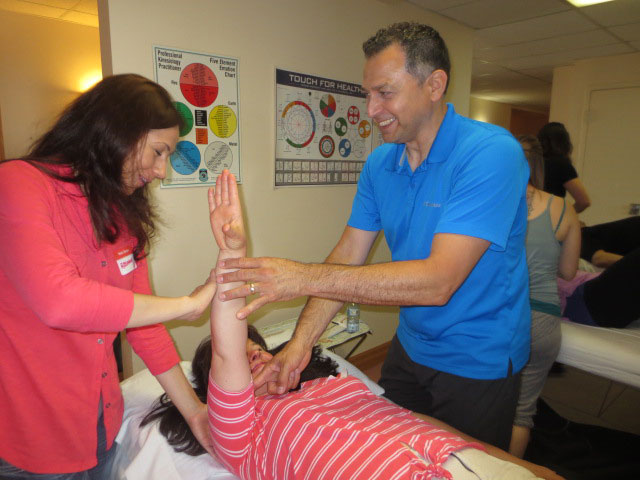
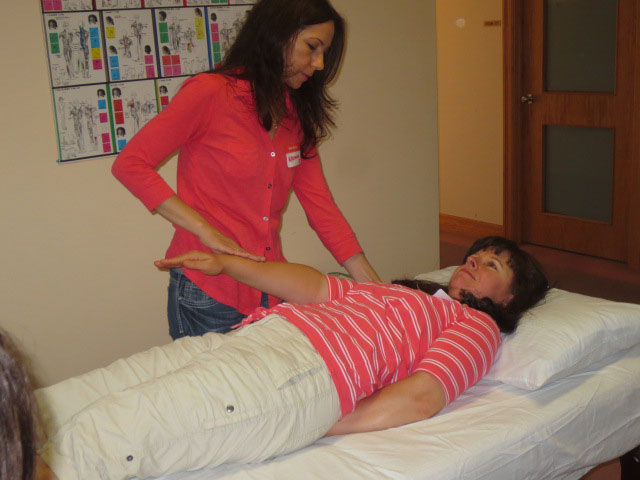
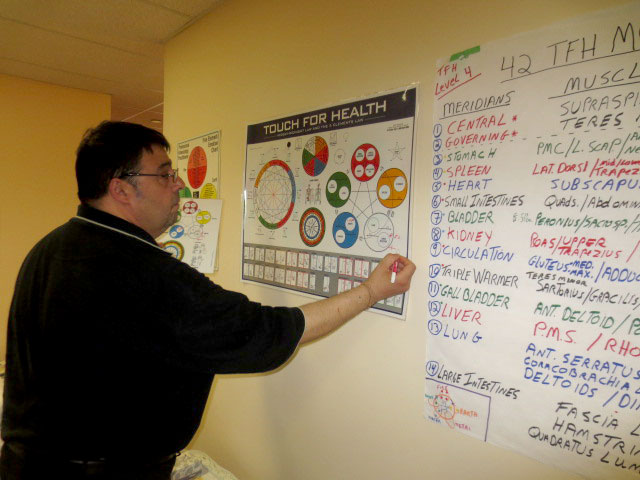

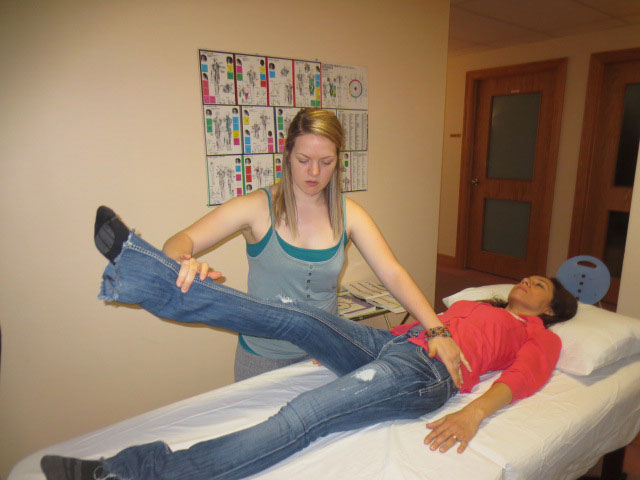
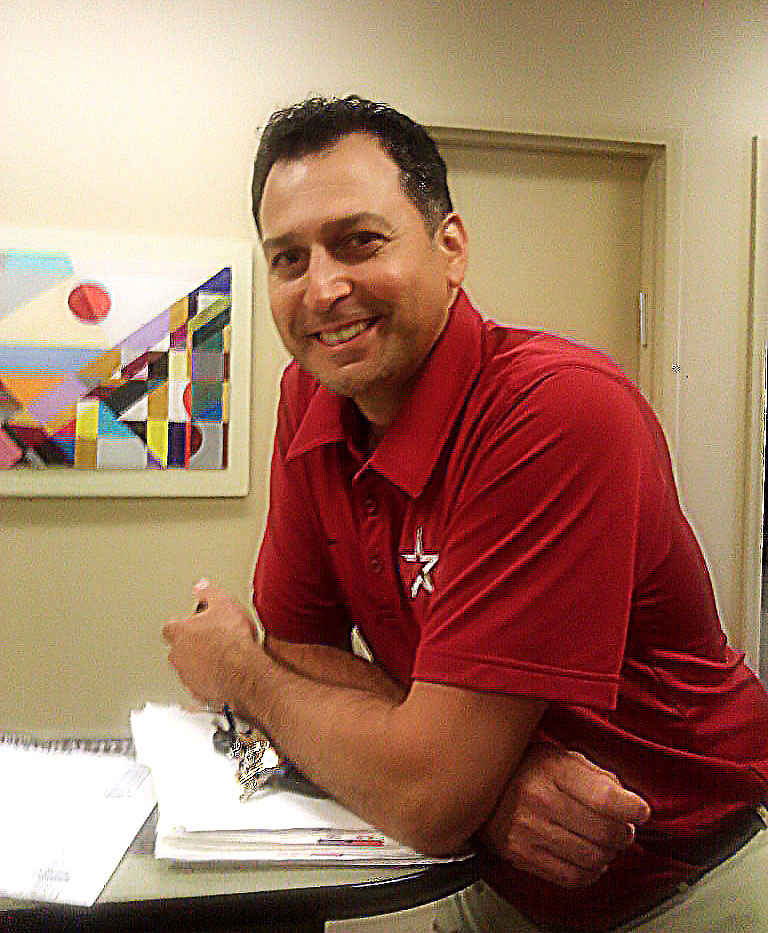
The Facilitator
Innergetics offers wellness clinics, health workshops, and educational and inspirational resources that build energy, awareness, and actions to help people reach their goals.
